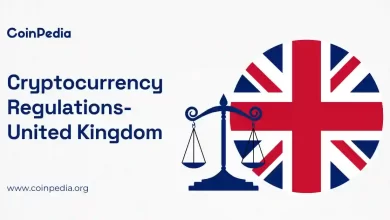
Mexico is one of the first countries in Latin America to enact laws regulating financial technological institutions, also known as fintech law. With no specific cryptocurrency law, Mexico continues to evolve its regulatory systems in 2025, impacting financial institutions and individuals in the crypto space. Since 2018, the Mexican government has legalized virtual assets, including cryptocurrency, through the Fintech Law.
Table of contents
Overview of Crypto Regulations in Mexico
As of 2025, Mexico has not introduced any new crypto-related law; however, it is developing an enhanced framework for fintech and digital assets laws, focusing on consumer protection and financial stability.
| Date | Law/ Regulation | Details |
| July 11, 2024 | Creation of ‘Digital Agents’ | Establishing a new type of banking to publicly offer |
| February 2024 | Bitso proposal | Bitso contributes in shaping the regulatory landscape of digital assets |
| June 7, 2023 | National Code of Civil and Family Procedures | Local government will fully adopt the code by April 1, 2027 |
| April 2022 | Peso Digital Currency | Banxico to soon implement peso digital currency as part of long-term payment strategy |
| February 2022 | Bill to create Central Bank Digital Currency (CBDC) | Senator Kempis set to make Bitcoin legal tender |
| August 2021 | Tightening of AML regulations | Ensuring compliance with the anti-money laundering legal framework |
| June 2021 | Reiterating, crypto is not legal tender | The finance minister warned that crypto is not legal tender, and local financial institutions are not authorized to operate virtual assets |
| July 2019 | New rules for Fintech Law | New rules were introduced for robust crypto regulations |
| March 2019 | Circular 4/2019 | Banxico prohibits banks from directly dealing with virtual assets |
| September 2018 | Blockchain to track public bids | Blockchain-based project to reduce corruption in bidding for government contracts |
| March 9, 2018 | Fintech Law passed | Financial entities, including digital assets, can be authorized by Banxico |
| December 2017 | Proposal of fintech law | The government announced its plan to introduce a fintech law |
| March 2014 | Banxico issued a warning | Banxico warns about the risks of virtual currencies |
What is the Mexican government saying about crypto?
The Bank of Mexico is the primary regulator of crypto in the region; Currently, it is focusing on maintaining digital asset transactions and ensuring AML compliance.
Digital currency:
- Banxico is actively working on the development and implementation of digital currency in the country, which is expected to be released by the end of 2025.
- This approach aims to expand financial inclusion by providing access to digital payment methods for individuals who are unable to access traditional ones.
Innovation and Stability:
- Mexico is set to evolve its financial regulatory framework and integrate it with technology to explore digital currency and blockchain applications. It is also ensuring the safety and transparency standards for consumers to balance stability with innovation.
Crypto License in Mexico 2025
Mexico has not mandated any specific crypto licenses yet; however, the entities dealing with crypto and other virtual assets must register with the Comisión Nacional Bancaria y de Valores (“CNBV”).
Entities that desire to offer any crypto-related services must comply with anti-money laundering (AML) and other mandatory regulations.
Crypto Tax in Mexico
Mexico does not have any specific crypto laws, therefore, the general national tax law applies to it. In 2021, the Mexican tax Ombudsman confirmed that profits from crypto should be treated as income from the sale of goods.
- Income tax: Selling crypto for profit in Mexico is equated with selling any assets for profit. Thus, it is subject to income tax up to 35% for individuals and 30% for legal entities.
- VAT: Provisioning services or the sale of goods in exchange for crypto triggers VAT; 16% VAT is required, depending on the classification of the transaction.
- Large transaction: If the crypto transaction exceeds US$12,500, the buyer is required to withhold 20% and pay directly to the tax authority.
- Digital platforms facilitating crypto transactions may be required to withhold the tax on behalf of the user.
Crypto adoption rate in Mexico
- Users: It is expected that during 2025, Mexico’s cryptocurrency market will reach $985.5 million, crossing the rate of 15 million crypto users in the region.
- Age ratio: The total population of Mexico is 129.7 million, among which 37% of crypto investors are aged 25-34, and 22% for the rest of the age group. A report released in March reveals that 74% of crypto users in Mexico are men.
- Penetration rate: The estimated under penetration is expected to reach 12.93% and is anticipated to grow up to 9.80% by 2033.
- Crypto holdings: It is not disclosed yet; the Mexican government prioritizes releasing a government-backed digital currency (CBDC).
Also read: Crypto Regulations in Canada 2025
Endnote
Mexico is one of the countries in Latin America that is currently focusing on enhancing the regulatory landscape for cryptocurrency and digital assets in the region. I believe if Mexico maintains this stability of cryptocurrency with the legal framework and boosts the security regulations, then in no time, it will be posing as a crypto hub in the global landscape.
Never Miss a Beat in the Crypto World!
Stay ahead with breaking news, expert analysis, and real-time updates on the latest trends in Bitcoin, altcoins, DeFi, NFTs, and more.
FAQs
Yes, virtual assets including cryptocurrency are legal in Mexico through its Fintech Law. However, crypto is not considered legal tender and financial institutions need Banxico’s approval for operations.
Profits from selling crypto in Mexico are treated as income from the sale of goods. Individuals are subject to income tax up to 35%, while legal entities face a 30% tax rate.
VAT (16%) applies to services or goods exchanged for crypto, depending on classification. If a crypto transaction exceeds US$12,500, the buyer may be required to withhold 20% and pay it to the tax authority.
The Bank of Mexico (Banxico) is the primary regulator, focusing on digital asset transactions and AML compliance. The Fintech Law also involves other bodies like the Ministry of Finance and Public Credit and the National Banking and Securities Commission.
Banxico is the primary regulator focusing on digital asset transactions and AML compliance. It prohibits banks from direct crypto dealings, but is actively developing a peso digital currency (CBDC) expected by late 2025.
Trust with CoinPedia:
CoinPedia has been delivering accurate and timely cryptocurrency and blockchain updates since 2017. All content is created by our expert panel of analysts and journalists, following strict Editorial Guidelines based on E-E-A-T (Experience, Expertise, Authoritativeness, Trustworthiness). Every article is fact-checked against reputable sources to ensure accuracy, transparency, and reliability. Our review policy guarantees unbiased evaluations when recommending exchanges, platforms, or tools. We strive to provide timely updates about everything crypto & blockchain, right from startups to industry majors.
Investment Disclaimer:
All opinions and insights shared represent the author's own views on current market conditions. Please do your own research before making investment decisions. Neither the writer nor the publication assumes responsibility for your financial choices.
Sponsored and Advertisements:
Sponsored content and affiliate links may appear on our site. Advertisements are marked clearly, and our editorial content remains entirely independent from our ad partners.








